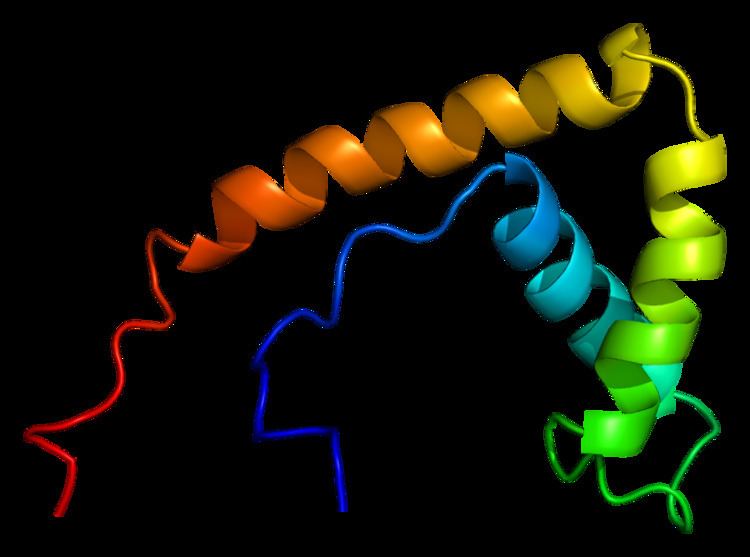Entrez 3146 | Ensembl ENSG00000189403 | |
 | ||
Aliases HMGB1, HMG1, HMG3, SBP-1, HMG-1, high mobility group box 1 External IDs HomoloGene: 110676 GeneCards: HMGB1 | ||
High mobility group box 1 protein, also known as high-mobility group protein 1 (HMG-1) and amphoterin, is a protein that in humans is encoded by the HMGB1 gene.
Contents
HMG-1 belongs to high mobility group and contains HMG-box domain.
Function
Like the histones, HMGB1 is among the most important chromatin proteins. In the nucleus HMGB1 interacts with nucleosomes, transcription factors, and histones. This nuclear protein organizes the DNA and regulates transcription. After binding, HMGB1 bends DNA, which facilitates the binding of other proteins. HMGB1 supports transcription of many genes in interactions with many transcription factors. It also interacts with nucleosomes to loosen packed DNA and remodel the chromatin. Contact with core histones changes the structure of nucleosomes.
The presence of HMGB1 in the nucleus depends on posttranslational modifications. When the protein is not acetylated, it stays in the nucleus, but hyperacetylation on lysine residues causes it to translocate into the cytosol.
HMGB1 has been shown to play an important role in helping the RAG endonuclease form a paired complex during V(D)J recombination.
Role in inflammation
HMGB1 is secreted by immune cells (like macrophages, monocytes and dendritic cells) through leaderless secretory pathway. Activated macrophages and monocytes secrete HMGB1 as a cytokine mediator of Inflammation. Antibodies that neutralize HMGB1 confer protection against damage and tissue injury during arthritis, colitis, ischemia, sepsis, endotoxemia, and systemic lupus erythematosus. The mechanism of inflammation and damage is binding to TLR4, which mediates HMGB1-dependent activation of macrophage cytokine release. This positions HMGB1 at the intersection of sterile and infectious inflammatory responses.
HMGB1 has been proposed as a DNA vaccine adjuvant.
Interactions
HMGB1 has to interact with P53.
HMGB1 is an intracellular protein that can translocate to the nucleus where it binds DNA and regulates gene expression. It can also be released from cells, in which extracellular form it can bind the inflammatory receptor RAGE (Receptor for Advanced Glycation End-products). Release from cells seems to involve two distinct processes: necrosis, in which case cell membranes are permeabilized and intracellular constituents may diffuse out of the cell; and some form of active or facilitated secretion induced by signaling through the NFkappaB.
HMGB1 can interact with TLR ligands and cytokines, and activates cells through the multiple surface receptors including TLR2, TLR4, and RAGE.
Interaction via TLR4
Among the receptors of amphoterin includes toll-like receptors. Interaction of HMGB1 and TLR4 results in upregulation of NF-kappa B , which leads to increased production and a release of cytokines in macrophages and in neutrophils for example stimulates release ROS via TLR-dependent activation of NADPH oxidase. HMGB1-LPS complex activates TLR4, and leads to binding adapter proteins (MyD88 and others), which leads to signal transduction and activate signaling cascades. In the last line leads to activation of MAPK cascades and NF-kappa B and thus to the production of cytokines and other inflammatory molecules.
Clinical significance
HMGB1 has been proposed as a target for cancer therapy.
